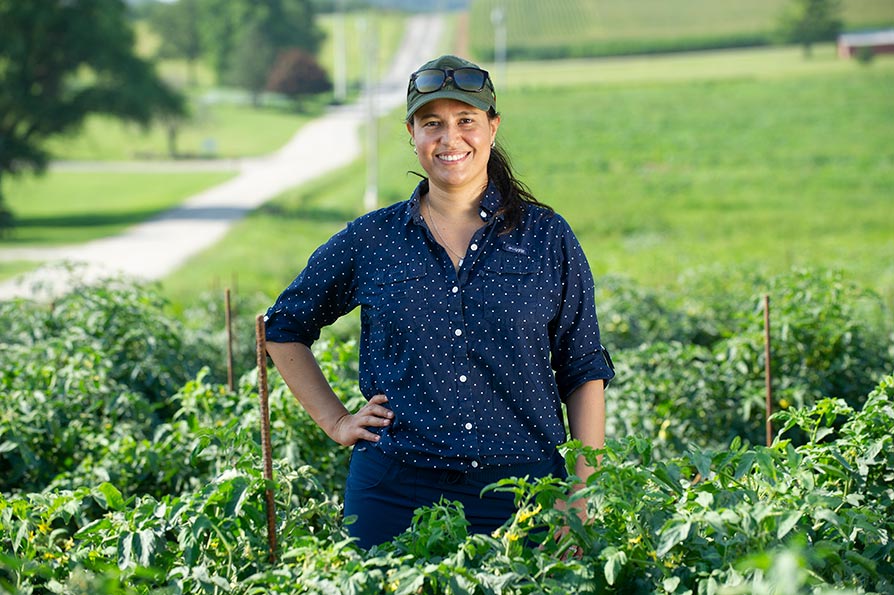Berry Sales Strong In Retail

A mutiny of sorts is occurring in supermarket produce departments across the country. Berries have taken over.
The berry category — including strawberries, blueberries, raspberries, and blackberries — has surged ahead of packaged salads for the #1 position across the country, says Greg Calistro, director of produce and floral for Save Mart Supermarkets, which is headquartered in Modesto, CA. Rounding out the top 5, in descending order, are apples, bananas, and grapes. Calistro emphasizes that this is a national compilation, and will certainly vary by region. For instance, in Save Mart’s 226 stores throughout central California and northern Nevada, avocados crack the top 5.
But the big story is berries. Calistro says that in just the past five years, berry sales at Save Mart, as a percentage of overall produce sales, have doubled from 5.5% to 11%. “We’ve seen five or six years of double-digit growth,” he says. “Berries are the one fruit you can count on for strong sales year-round.”
Nutrition A Factor
Calistro attributes the growth to a wide number of factors, and says sales have been pulled through by consumers, but also pushed through by retailers as well as growers. All the reports concerning berries’ tremendous nutritional benefits — blueberries were once famously referred to as “brainberries” in one study that showed they may help ward off Alzheimer’s disease — are getting people to give them a try, says Calistro. But it’s ultimately the taste that brings consumers back for more.
“Once you get them to buy, and they are consistently good and you can get (at least some types of berries) year-round, people will keep coming back for more,” he says.
Consistent quality is extremely important in the produce business, says Calistro. For example, some fruits, such as peaches and melons, are extremely difficult to provide consistently sweet experiences. That’s primarily due to the fact that ripeness and the ability to ship them don’t go hand-in-hand. That really hurts sales, says Calistro, citing an industry rule of thumb. “If the consumer gets a bad piece of fruit,” he says, “they won’t buy any of those for two weeks.”
Because of that factor, there are certain times of year Calistro won’t stock certain fruits even if they are available. For example, he cuts off sales of peaches from Chile a bare minimum of two weeks before California peaches start coming in each spring. “I don’t want to take the chance of having any inconsistent fruit on the counter,” he says. “I don’t want to risk the (California) opening.”
Candy Sells
The growers themselves deserve a lot of credit for the increased berry sales, says Calistro. For example, a lot of growers now put hoops over their crops, which can extend the season. But most important, the hoops protect the berries, which are the most fragile of fruits, from the elements.
Growers have also done a great job matching the type of variety with the location. For example, though blackberries rank fourth in sales, trailing strawberries, blueberries, and raspberries, they are the fastest growth segment at Save Mart. Albeit starting from a small base, sales have increased 30% to 40% per year, says Calistro, giving one variety/location as a perfect example.
“Season’s Finest,” a Driscoll blackberry variety, is only grown in the spring at a high elevation in Mexico. The variety is only available for about six weeks, from mid-April through May, but they sell extremely well, says Calistro. “They consistently come in at 16 to 18 Brix,” he says. “They’re like candy.”
Strategic Marketing
Driscoll’s, technically Driscoll Strawberry Associates, Inc., — though they market all of the big four berry crops — which is headquartered in Watsonville, CA, deserves a lot of credit for the increase in berry sales, says Calistro. Driscoll’s contracts with independent growers up and down the east and west coasts of the U.S., as well as in Michigan and several different countries, to ensure the availability of quality berries.
But besides working with growers, Driscoll’s works diligently with retailers at the other end of the chain. Calistro says he worked with Driscoll’s to come up with a strategic plan to move more berries. It wasn’t too long ago that specialty berries were available only in six-ounce packages. Now they are all available in larger, 12-ounce packages and there are clamshells, etc.
Driscoll’s also promotes heavily, employing a variety of sophisticated marketing strategies. But the simple ones still can work quite well, says Calistro. For example, berries can be found in at least two displays inside every Save Mart store, making them easy for consumers to find.









